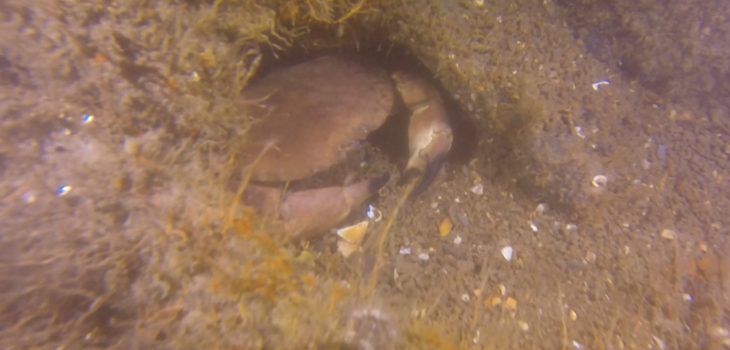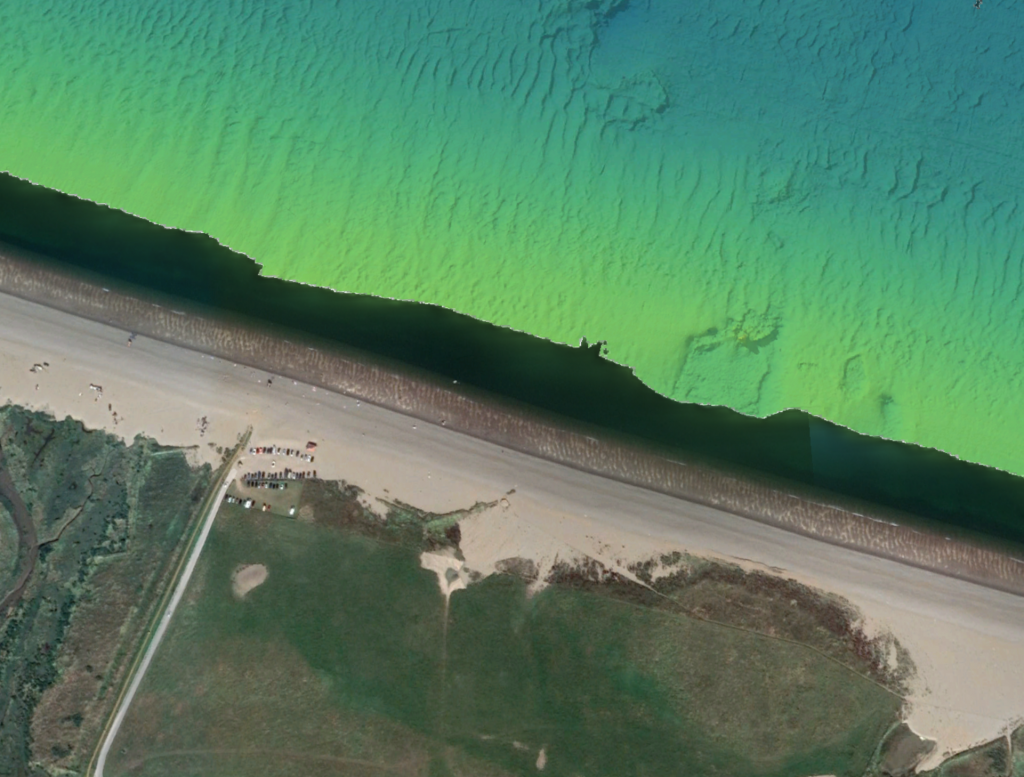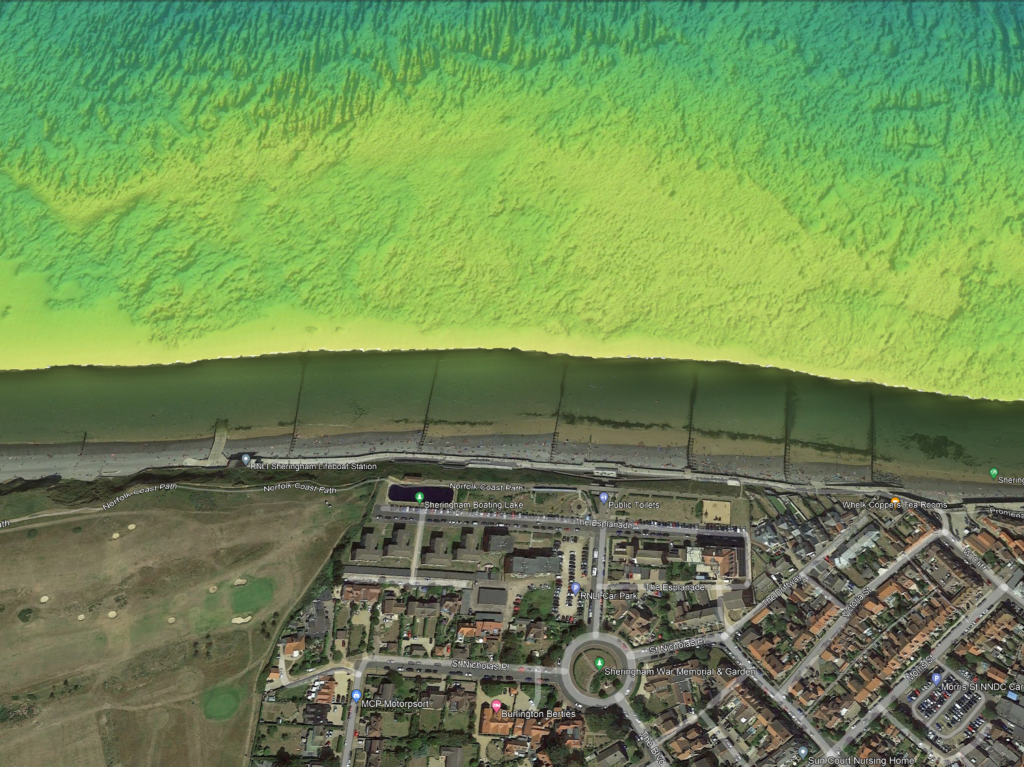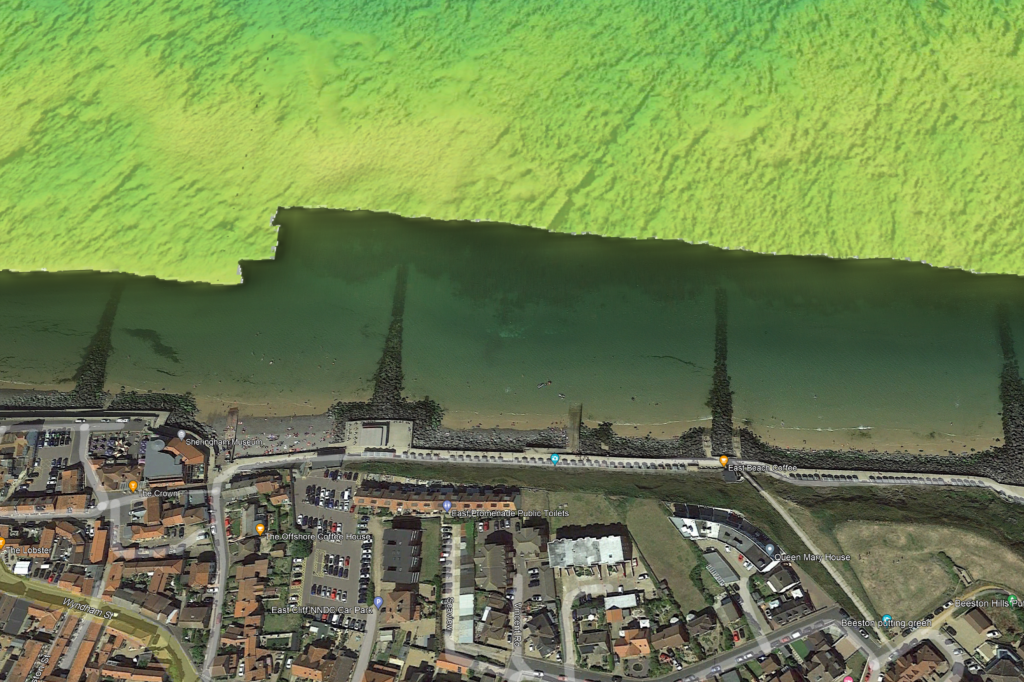
Diving the North Norfolk Chalk Reef
This page has been put together to give information on locations and tide times for snorkelling or diving the Norfolk Chalk Reef.
The North Norfolk chalk reef (also known as the Cromer Shoal Chalk Beds) is thought to be the longest chalk reef in Europe, and possibly the world. The reef spans over 20 miles long around the Norfolk coastline. The accessible chalk starts at Cley and continues around the coastline, heading west until you reach Bacton. There are many sites where it is possible to SCUBA dive or snorkel the Norfolk chalk reef from the shore.
The importance of the reef was acknowledged in 2016 when the reef was designated a Marine Conservation Zone (MCZ).
The chalk is generally quite shallow, with an average depth of 4–6 meters. Depths of over 8 meters can be found with a long swim out. From the shore, the chalk can be seen in depths as shallow as 1 meter, this also makes the chalk reef a great place to snorkel!
The chalk reef is best explored on a dead slack tide in the summer months when the water is the clearest. The visibility is at its best from July to October when the wind has been from the South round to the West for a period of time.
The visibility can exceed 10 meters and the water temperature can reach 20°C.
Tide Information
Tide times do vary slightly throughout the year, but as a rule we use Cromer tide times and work on the basis of slack water happening 2hrs after the low or high tide time. It is safest to go snorkelling and diving the Norfolk chalk reef on a slack tide, so there is no current.
Slack water is generally about an hour.
Working on this basis is a good start.
As you gain experience of the area, it can be possible to get in earlier and out later on neap tides for a longer dive/snorkel.
Sites
Below is a list of popular spots to access the chalk with a brief guide:
Cley

Cley is home to the SS Vera, which was shipwrecked on the shore here. This wreck can be dived as a shore dive and further information can be found on the SS Vera page.
The chalk is present on both sides of the wreck, and much further out to sea there is a forest bed for those who really like a challenge.
The wreck is the main feature here for beginners. It is recommended only seasoned chalk explorers SCUBA dive the chalk here with caution.
Weybourne

Weybourne is a very popular spot for shore diving in North Norfolk. Not only is the chalk accessible here, but there is also a wreck accessible with a short walk and a swim out. Please see the page about the SS Rosalie for more information on this.
Sheringham
Sheringham is located in the centre of the reef and is a very popular spot to access the reef with plenty of parking available as well as lifeguards present on the beach. The reef is easy to find here.
Two locations are popular here:
The Esplanade:

Free parking is available here at the side of the road along The Esplanade. The beach is only a short walk once kitted up from the road.
Public toilets are also located here.
Walk down the beach and enter the water. The chalk starts once you swim out past the groynes. Generally, the chalk gets bigger the further out you go here. Big gullies can be found approximately 250 meters out in front of Burlington Place. (This is the biggest building on the shoreline at this point).
The Victorian Sewer Pipe (Sheringham Snorkel Trail):
To access the pipe, it is best to park in the Cliff Road Pay and Display car park and walk down the steps onto the seafront. Turn right and walk along the seafront until you reach the ramp into the sea.
Here an old Victorian sewer pipe can be found on the seabed, starting close to shore and running out to sea. The pipe is only in a couple of meters of water and this can be a very popular place to snorkel. Sometimes the start of the sewer pipe is marked with a buoy. The pipe is known locally as the Sheringham Snorkel Trail.
Close into shore, broken chalk can be found. Swimming out further, deeper gulleys and boulders of chalk can be found. Keep an eye out for lobster pots and the ropes attached to them. Do not interfere with the pots.
